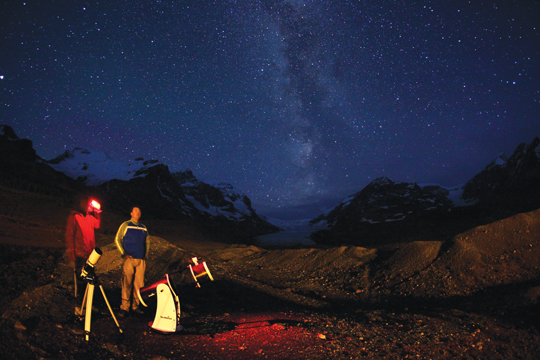Photography by Yuichi Takasaka
When you hear the words “Dark Sky,” you might be forgiven for thinking there’s a new alien-invasion show coming to the Space channel. But, no, you don’t need to set your PVR; instead, just head west on the Yellowhead. At Jasper National Park, the marketing message is that darkness is, well, beautiful.
For the second year in a row, Jasper injects life into what has traditionally been a slow tourist month, celebrating the fact that it hosts the largest Dark Sky preserve on the planet, one that covers over 11,000 square kilometres. That means it’s the perfect place to look up at the night sky and see it like you’ve never seen it before; to pinpoint the constellations and the planets.
While Dark Sky breathes life into the shoulder season, the Oct. 12 to 14 festival makes for comfortable stargazing. This month, Jasper experiences “total darkness” by 8:30 p.m., when it’s not bitterly cold, but comfortable enough to spend hours looking up at the cosmos. (However, for those who would brave the cold, Jasper hosted a Dark Sky viewing event on New Year’s Eve last year, when total darkness spread over the park by 7 p.m. And the event will be held again this year.)
My family and I sampled a preview of the festival in the spring, before the summer sunshine eradicated any chance of total darkness during June and July.
After the sun went down, it was a 10-minute drive from the townsite to Pyramid Lake. At the parking area, a series of lanterns lit a pathway through trees and to a bridge that crosses over into Pyramid Island. There, benches offered an unfettered view of the night sky over the lake. I gazed up into the sky and imagined, just for a second, that I was floating in space. It was like the shadowy mountain peaks and dark silhouettes of the evergreens acted to frame my view of the stellar skyscape. And, as we sat and looked up, the mountains acted as reference points, which allowed us to detect the slight motion of the stars in the sky. As stars slowly moved from our view to behind the peaks, they were replaced with new points of light.
